[one_half padding=”0 0 0 0px”]
Springfield Armory 1911 TRP Armory Kote
[/one_half]
[one_half_last padding=”0 0 0 0px”]
[/one_half_last]
Buy One on GunsAmerica:/Springfield Armory TRP
Check out the TRP at SA:https://www.springfield-armory.com/products/1911-trp-45-acp/
One of the perks of this job is the opportunity to work play with some really sweet guns. Most of them I have to send back because there’s not enough money in Hollywood for me to buy all the ones that come through here. Maybe if I get fat, slovenly and start making fraudulent mockumentary movies I can afford a few more…
One gun that I had to keep, at all costs, was the Springfield Armory 1911 TRP Armory Kote. Yep, it’s a classic 1911 chambered in God’s own caliber, .45 ACP. As we’ll see, it adopts most features from the original design but makes a couple of departures here and there. An improvement or just heresy? We’ll get to that shortly.
Springfield Armory’s goal for this particular pistol was to provide similar quality, functionality, and specifications as the famous FBI contract Professional Model 1911, but in a production gun. The FBI contract model from Springfield Armory won bragging rights, and a lucrative contract for the FBI’s SWAT and HRT teams, over a field of top-notch competitors back in 1998. In the end, Springfield Armory beat out high-end pistol makers like Les Baer, partly for Springfield Armory’s ability to produce the 5,000 guns specified. That’s a lot of custom work.
Requirements for the FBI model were tough. Guns had to shoot 2,500 rounds without a stoppage. They had to feed reliably hollow-point ammunition like the Remington Golden Sabers chosen by the FBI. They had to shoot 1.5-inch groups with service ammunition from 25 yards.
To make guns capable of meeting these specs, Springfield Armory called on their Custom Shop. Parts were individually fitted to each gun. Components like the barrel, barrel bushing, and slide were individually numbered to a frame. While this type of attention creates fine guns, it doesn’t allow for mass production at prices affordable by those not working for the infinitely-wealthy government.
Enter the Springfield Armory 1911 TRP.
The idea behind this gun is to provide many of the end benefits of the FBI model, but without the level of individual hand fitting and associated cost.
[one_half]
[/one_half]
[one_half_last]
[/one_half_last]
Springfield Armory TRP Features
Let’s take a tour through the various components of the Springfield Armory TRP.
The TRP model shown here is the Armory Kote™ version with a black Teflon finish. You can also get the standard TRP with an all-stainless steel finish. Springfield Armory also produces TRP Operator variants that include rails on the dustcover. The standard TRP is a traditional smooth frame design.
The frame itself is forged, and National Match quality. On the right side, just above the trigger, you’ll see an engraving that states “Springfield Armory, Geneseo, IL, USA, followed by an NM plus the serial number. On the left side, just behind the front cocking serrations, the word “Tactical” is subtly stamped, presumably in homage to it’s FBI contract roots.
[one_half]
[/one_half]
[one_half_last]
[/one_half_last]
The checkering job on the front and back of the grips is impressive. The front of the grip has 20 line-per-inch checkering that created miniature square pyramids. I only clarify this as the points of the checking on the front strap are not softened or blunted. They’re sharp and feel sticky on the hand. They’re sharp, by design, but not uncomfortable. Just sticky. The back strap of the grip (flat mainspring housing) also features 20 line-per-inch checkering, but the pyramid tips are slightly softened. My guess is that they’re designed to be a little more compatible with the un-calloused skin in the web of the hand. Just to be sure I wasn’t seeing things with this subtle difference, I got out the magnifying glass. Sure enough, the checkering is blunted on the mainspring housing. It’s one of those little touches that differentiate a “regular” gun from a premium one. Either that or my grip is so amazingly strong that I’ve flattened the checkering.
Apparently the TRP Armory Kote model is supposed to be the more tactical version as it comes with G10 grip panels. The stainless TRP comes with attractive wood grips. The gray G10 grip panels are plenty aggressive and heavily textured. They provide a positive hold with bare or gloved hands. If you carry this model using an IWB holster, be sure to wear an undershirt else you might rub the love handles raw. You’ll notice that the left grip panel has a recessed cut that allows your thumb to reach the magazine release a bit easier. The cut removes just enough “distance” to allow me to activate the magazine release with no movement in my strong hand grip. Neat idea.
[one_half]
[/one_half]
[one_half_last]
[/one_half_last]
While not part of the forged frame, you’ll find an enlarged and beveled magazine well. It extends about ¼-inch below the based of the frame and makes fast magazine changes easy. The front is open while the back and both sides have wide bevels to guide the magazine into place. The included magazines have base pads so when inserted, they are flush with the bottom of the magazine well extension. No extra effort is required to seat the magazine properly.
Moving to frame-mounted components, you’ll find an aggressive beavertail grip safety that, for me, does a flawless job of preventing hammer bite no matter how sloppy my grip is. The grip safety has a “memory bump” that provides a little extra insurance that it will activate with a variety of grip styles. For example, I like to shoot a 1911 with my thumb riding the safety lever. This grip has a tendency to draw the web of your hand ever so slightly away from the back strap of the pistol. Yeah, weird, but true. Give it a try by gripping the pistol with your thumb curled down. Now raise your thumb, and you should see the web of your hand move away from the gun just a hair. Anyway, the bump provides a little forgiveness and I have no problem with activation of the safety using my thumbs up grip.
[one_half]
[/one_half]
[one_half_last]
[/one_half_last]
While we’re talking about safeties, the TRP has ambidextrous thumb safeties on either side of the frame. To my naked eye, the left safety lever is ever-so-slightly wider than the right side. Sorry, I didn’t remove them to check with a caliper. The net takeaway point is that the safeties are basically equal on either side of the frame, so operation with either hand should feel identical.
The slide is machined to a very tight frame fit. When I first picked up this TRP, racking the slide took some enthusiasm. It was smooth, but tight. From shot number one, the gun functioned perfectly, even with a very tight slide fit. Over the couple thousand rounds I’ve put through this pistol so far, the tension has loosened, and the slide racks with less effort. It’s still smooth, however, and has no detectable shake.
As you might expect, the ejection port is enlarged and has a bevel cut near the breech, presumably to smooth ejection.
The slide has cocking serrations both front and rear. The pattern is subtle, yet effective. Both sets of serrations are created with squared ridges. The pattern provides good grip but isn’t sharp and won’t tear up hands or holsters. The front serrations are clearly a personal preference issue. I like them for press checks, but I fully agree that’s neither right or wrong, just my habit.
On a 1911 like this, you would expect a match barrel and bushing, and the TRP includes that too. We’ll get to accuracy a little later, but for now, we’ll just mention that barrel and bushing are stainless steel. There’s a “S.A. .45 ACP” stamp on the top visible through the ejection port.
[one_half]
[/one_half]
[one_half_last]
[/one_half_last]
The sights are Novak low profile style. They have Trijicon tritium inserts both front and back, using the standard single dot up front and two dots in the back pattern. The housings are actually manufactured by Springfield Armory. The rear sight is ramped, but has a small ledge. With a little care, you can rack the slide using the small ledge, but it does require a sharper surface to catch. Both front and rear sight housings are installed with dovetails should you choose to swap them out for something different.
Moving around to the muzzle, you won’t see a standard 1911 recoil spring plug. You’ll see a full-length guide rod with a hex hole. That’s because it’s a two-piece guide rod system. At risk of opening a philosophical debate, I’ll say that guide rods are something I don’t care about, one way or the other. I care about function. Does it work? All the time? If so, great, whether there is a full length guide rod or not.
For those who care about the field expedient scenario of disassembling your pistol without tools, you won’t like this feature. You can remove the whole slide assembly from the frame without any tools, but you won’t be able to remove the barrel from the slide without an allen wrench. Turning the exposed end of the guide rod allows it to separate into two pieces. Remove the front piece, and the TRP field strips like any other 1911 from that point on.
[one_half]
[/one_half]
[one_half_last]
[/one_half_last]
As for me, I don’t care too much about this. The overall time to disassemble is only a few seconds longer than that of a 1911 without a two-piece guide rod. I’ve yet to find myself in Siberia without any sort of multi-tool in my possession and a pressing need to completely disassemble my pistol. But if you do that sort of thing, be forewarned. Of course, you can always swap out the factory guide rod for a traditional one and recoil spring plug.
As to the pro arguments, some are convinced that the full length guide rod increases accuracy and/or reliability. This is not something I’ve ever been able to test quantifiably in any meaningful way. So for this purpose, I’ll simply report that I’ve put a few thousand rounds through this pistol, with it’s guide rod, and it has worked just fine.
[one_half]
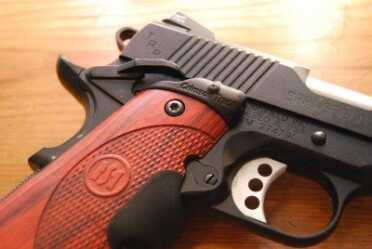
The grips are standard, so you can use most any style you want, like these Crimson Trace Master Series Lasergrips.
[/one_half]
[one_half_last]
[/one_half_last]
The trigger on the TRP is a match grade aluminum model with three holes behind the face. The front is covered with vertical serrations. An adjustable overtravel screw is inset at the base. There is short frictionless take-up followed by a crisp break. Without any adjustment to the overtravel screw there was no detectable movement after the break. Using a trigger gauge, I measured the break at five pounds.
The TRP includes an internal lock. Meh. Apparently lawyers are masters of the universe. I really prefer not to have any extra internal locks inside of my guns. It’s just one more thing that adds needless complexity. If I want to lock my gun, there are dozens of ways to do that without interfering with the internal action. This one is a custom, two-hole “screw” that is accessible through the rear of the mainspring housing. You don’t need to remove grips to access it. It’s intended to lock the hammer in the down position. This is a longer term storage feature, not something you would use if you ever might need quick access. Springfield includes a special key to operate the mechanism. All my griping about internal locks aside, I’ve never touched this one and it hasn’t caused me any problems.
Shooting
Reading through the features and specs, I expected a lot from this pistol and I wasn’t disappointed with it’s performance on the range. Shooting it is pure joy. The trigger (deliberately set in the five pound range as it’s a tactical model) is delightful. It’ll spoil you, and it feels a lot lighter than the five pounds I measure with a scale.
As far as feeding, one of the main requirements of its Grand Pappy, the FBI contract model, was to feed all sorts of difficult hollow point ammunition. It does. In fact, I’ve shot somewhere around thirty different types of .45 ACP ammo in all weights, bullet shapes, and velocities.
[one_half]
[/one_half]
[one_half_last]
[/one_half_last]
Heck, I’ve even shot 450 SMC ammunition in six different weights and bullet profiles. If you’re not familiar with 450 SMC, think of it as turbocharged .45 ACP. At the low end, I tested a DoubleTap Ammunition 160 grain Barnes TAC-XP that clocked 1,241 feet per second in the TRP. At the heavy end, I tried another DoubleTap Ammunition load, a 255 grain semiwadcutter hardcast that clocked in at 1,085 feet per second. That’ll wake you up in the morning. Of course, if I was going to feed the TRP a steady diet of 450 SMC, I’d be sure to put in a heavier weight recoil spring.
The Springfield Armory TRP eats everything. I’ve had no malfunctions of any kind (yet) in somewhere between 2,000 and 3,000 rounds. I regularly make 185 and 200-grain lead semi-wadcutter ammo for this gun and it feeds those like a champ. I’ve not found a commercial or hand loaded round yet that presents any type of problem. I might have to try loading spark plugs or something to see if I can make it fail. Just kidding…
Accuracy and Velocity
As a 5-inch barrel government model size, you’ll get maximum .45 ACP velocity out of whatever load you I choose. As part of my function testing, and to be honest, my not so serious plinking regimen, I clocked a number of loads for velocity.
| Ammunition | Velocity |
| Black Hills JHP +P 230 grain | 927 fps |
| CCI Blazer FMJ 230 grain | 853 fps |
| Federal FMJ 230 grain | 866 fps |
| Federal FMJ white box 230 grain | 803 fps |
| Federal Guard Dog EFMJ 165 grain | 1,053 fps |
| Federal Hydra-Shock 230 grain | 883 fps |
| Hornady Critical Defense 185 grain | 1,002 fps |
| Magtech First Defense +P SCHP 165 grain | 1,076 fps |
| Remington Golden Saber +P 185 grain | 1,165 fps |
| Remington UMC 230 grain | 844 fps |
| Sellier & Bellot 230 grain FMJ | 804 fps |
| Winchester PDX1 230 grain | 911 fps |
I also did some quick and dirty accuracy testing. I’m not a big fan of testing for accuracy without either a Ransom Rest or a rail equipped gun where I can attach an optic. With iron sights, there is just too little precision at distance based on the limitations of the human eye. Sure, we can shoot small groups, but without fail, I can take the same gun, shoot careful iron sight groups, followed by groups using an optic, and the optics groups will always be smaller. Rant over.
With that said, here’s what I measured for 5-shot and best 3-shots within the groups at 25 yards with a sandbag rest. I figure the best three measurement will help rule out some of the sighting error from my aging eyes.
| Ammunition | 5-shot | 3-shot |
| Black Hills JHP +P 230 grain | 2.74″ | 1.45″ |
| PolyCase Inceptor ARX 114 grain | 2.57″ | .87″ |
| Federal Premium HST 230 grain HP | 1.86″ | .89″ |
| Federal Premium 230 grain Hydra-Shok | 2.07″ | .97″ |
| Barnes TAC-XPD 185 grain +P | 2.14″ | 1.17″ |
| Sig Sauer Elite 230 grain FMJ | 2.14 | 1.10″ |
That’s nice, but the real accuracy indicator for me is how easy it is to shoot accurately. The weight, balance, and outstanding trigger provide a lot of confidence that I can hit what I intend to hit, with great precision. And that’s what I care most about.
The Net-Net-Net
I’ve had time to really run this gun with plenty of range visits and rounds down range. It lives up to its $1,500 or so street price in every possible way. Can you buy a serviceable 1911 for less? Sure. You can also buy a serviceable car for less than a Ford GT, but they won’t be comparable either.
The bottom line? I carry this gun as my CCW. That’s how much I trust it.
Factory Specs
Full size 1911-A1 platform
5-inch match grade barrel and bushing
8.5-inch overall length. 5.7 inch overall height.
Armory Kote™ Teflon finish (as tested)
Weight: 42 ounces, unloaded.
Aluminum match grade trigger
Checked front strap and mainspring housing
Wide mouth magazine well. 2 included magazines with slam pads.
G10 grip panels
Low profile tritium combat night sights
MSRP: $1,646.00

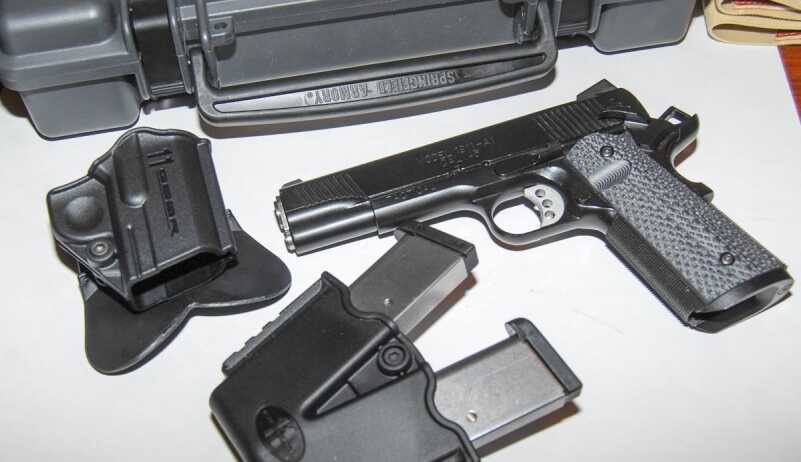
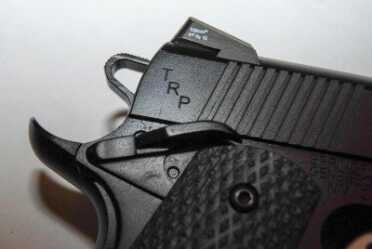
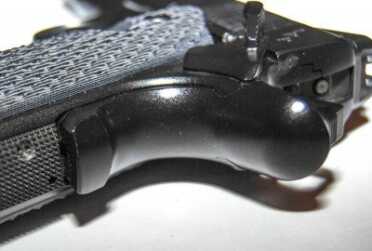
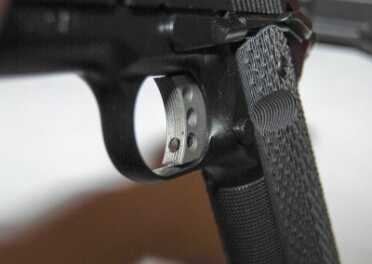
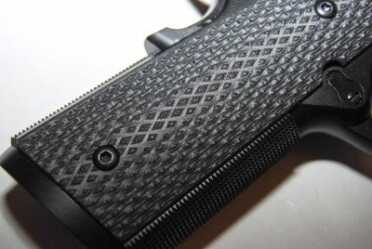
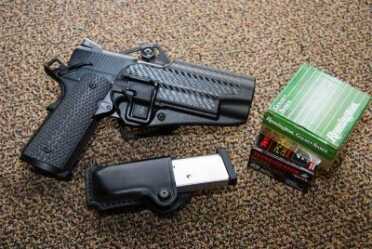
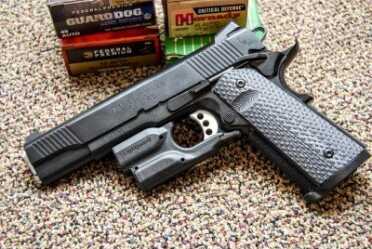
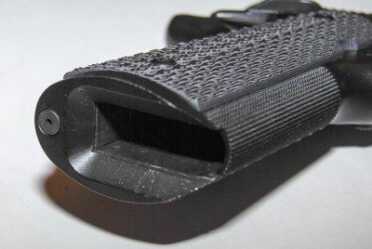
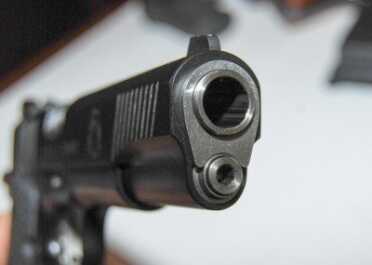
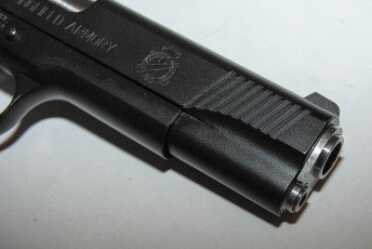
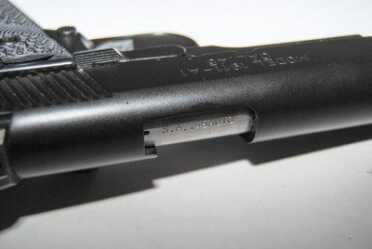
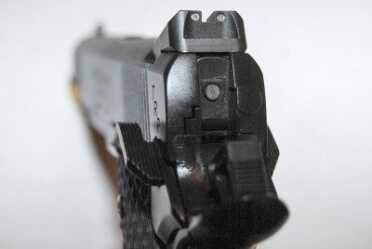


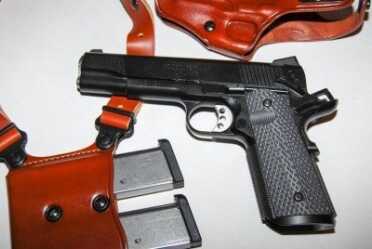
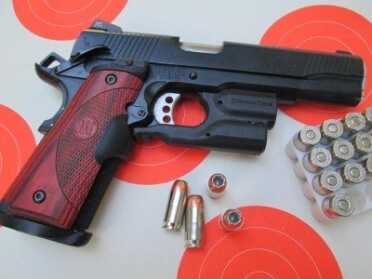
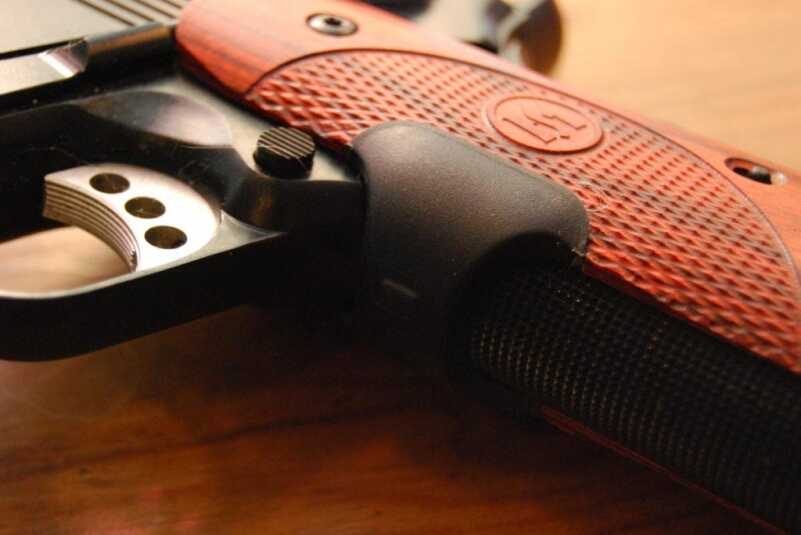
I plan on purchasing the trp half rail. I see that you didn’t have any trouble finding a holster for the traditional 1911 style without the rail. Can you or anyone help me find a holster with a trigger lock compatible with the 5 inch trp operator half rail?
I bought my Springfield TRP in 2011 at the 100 year 1911 Anniversary. Best buy I ever did. Heavy gun, I changed out the full length guide rod for the shorter GI rod. Of all the upper set of 1911 this fit the bill just right without going broke. I have four 1911’s now along with my carry gun the Colt Defender. Springfield Ultra Compact and my Colt Government 1911. Happy shooter.
I just love my TRP, I’ve put over 2,000 rounds through it without a jam or stove pipe. I have the SS model, I just wish they would put a rail on the SS. Outside of that its the best .45 I ever had. Also my carry.
i got their loaded series about the same but cuts in the front grip area. i got a one piece beveled magwell and a hogue wrap around rubber grip with finger grooves . changed out the 2 piece guide rod for old short one piece original style. did the rod change so i could take it apart without having an allen around to take a part the 2 piece rod. th gun was around $700 i think plus the extras. still way less then $1000 and it’s has evevrything else the same as this one. it’s my EDC. i got a leather belt and leather holster from DM Bullard’s out of Texas. all hand made and holds it good and tight next to the body and can’t tell you’re carrying full size 1911. all my holster come from DM as he makes super fine holster’s and more that last a life time and fit your guns perfect. no i don’t work for them just believe in their product.
I have the GL model. Sorry to say my guide rod in the rear as my barrel after 200 rounds is showing damage! Horrible customer service from Springfield Armory! Sorry t say waste of money!
Awesome review, sir. I appreciate it.
I am planning on purchasing the TRP Operator, but I am concerned about one issue, and I was hoping that the gentlemen who already own, and carry, one can assuage my concerns.
I plan on this gun being my CCW. Therefore, it would be my preference to have fixed combat sights. I’m sure I can have this done after-the-fact, but dropping another $100-$200 (or more?) to do this seems silly when you’re spending over $1,500.00. That said, my question is: those carrying the TRP Operator as their CCW, do the adjustable sights get caught on clothing? Also, once you get the sights dialed in, how easy is it to adjust the sights — particularly, accidentally (if at all)?
Lastly, I am leaning toward the “half rail”. Can anyone make the argument for the full-size rail?
Thank you in advance for your time and knowledge.
V
If you plan on having this as your CCW, good luck. This 1911 is a GREAT gun but very heavy. There is a reason why the TRP operator is 1600 MSRP. You get what you pay for. I was on the market for a 1911 after I got my sig 1911 stolen and my little brother told me about this gun. The HYPE is real with the TRP operator. When I go shoot alone I’m always dead on accurate with this gun. I can shoot one handed from 20ft away and hit bull eyes. Give me 5 shots and i’ll hit it 3 or 4 times dead on. Remember 20 ft equals about 6 yards give or take. You will be crying after a week if you want to use this as a CCW. The stock holster can make this gun concealable but if you have a surefire light on it don’t count on finding a holster that is small. It took me a while to find a TRP holster to accommodate my surefire x400 light and it was a bladetech. The holster is HUGE. All I have to say is good luck having it as a CCW.
I looked at Kimber . Spent hours looking at comments and reviews. I don’t bash others unless it is really bad. Kimber had good comments , but so many inconsistencies compared to the Springfield . As others have mentioned , 99+% of the Springfield TRP reviews are positive and even over the top. I’m and HK fan and have 2, a USP 45 and P30. Both are great and flawless . I picked up the Springfield 1911 TRP 45 this week .– right out of the box this week I had 2″ groupings with bulls eyes at 20ft . I can’t wait to get the sites dialed in even more . It will be my carry as well
A Springfield 1911 for $1,650? When you can own a Kimber Master Carry for $1,300? Not a chance.
Kimber’s are finicky garbage compared to the TRP. 1300 for a gun that use plastic parts! No thanks ill out shoot a kimber with a Springfield everyday of the week and twice on Sunday
Right on!
I’ve read many reviews about the TRP, but yours is the most thorough and concise. I own both th AK and SS versions and agree with your review. Along with the SA’s, I own an EBKC, LBC2, and yes a RIA FS Tactical in nickel. Pound per dollar, the TRP cannot be beat.
Good review! I purchased the identical TRP about a year and a half ago, and I too have put thousands of rounds through mine; mostly 230gr fmj of whatever brand was available. However, I have also fed it a couple hundred rounds of Golden Sabre, Federal Hydra-Shock, Powerball +P, and whatever else I had ever carried in .45acp. Why did I choose the TRP? I am a big fan of checkering on both the front strap and main spring housing, it is included. Whenever I purchase a new 1911 home from its initial range visit, I clean it thoroughly, and generally add a few upgrades. To begin with, I usually add a steal two piece guide rod (no arguments, you like them or you don’t) – this one already has it. I usually add G10 grips with a thumb relief cut in the side for the magazine release – they are included. If not included, I will eventually add tritium sights, but SF includes them. They do all this, add a mag well, and a match grade barrel in a production gun. Even for $1500-$1600; there is still a lot of value in the TRP. It really is a fantastic shooting 1911, whether running it right or left handed. I also own 1911’s from Colt, Kimber, Para, and S&W. Without a doubt, the best performing one out of the box, was the Springfield. If I could do one thing to improve the TRP for me, it would be to offer a high polish blued finish; something along the lines of Colt’s bluing in the first half of the last century. It wouldn’t be as durable as the armory coat, but it would look awesome.
Ambidextrous safety levers? Great, so why do the factory grips have a thumb notch on the left? Making it difficult for me to shoot in my left hand.
Front serrations? If you use the front serrations to rack the slide, you’ll get kicked out of an ISPC match, as it requires your hand to be in front of the muzzle. (I know, it happened to me.) Putting any part of your body, in any circumstances, in front of the muzzle is bad news. Let’s not even talk about how the front serrations weaken the slide.
Or it could be that I dislike both ambidextrous safeties and front serrations.
And therein lies the beauty of having 17,815,843 different 1911 models from which to choose! We can all basically find an off the shelf model somewhere that has exactly what we care about. I like front serrations, but totally understand why others don’t. To me, it’s a personal preference issue. Since I rarely shoot IPSC, that particular scenario is not much of an issue to me, but I get why it matters to others.
One of the problems with the TRP is the soft aluminum full length guide rod. After 100 or so rounds, the slide return springs digs into the rod. Sent a picture of the guide rod to Springfield and they sent another aluminum guide rod. A steel guide rod from Ed Brown solved the problem.
As a firearms dealer and Master Gunsmith, it’s been many years since SA has built and shipped the any of the models of the TRP with aluminum guide rods. They fixed the issue and haven’t looked back since.
Guess they did not get the memo as of two years ago. jdt
For what it’s worth, this one was made about two years ago and has a steel two-piece guide rod. Sorry I don’t have the exact manufacture date handy, so it might be a little newer than two years. I’ll try to dig it up to see. Apparently they did change from aluminum at some point.
That is very valuable information about Springfield fixing the guide rod.
Tom, this sounds like an awfully nice gun, and your review is meticulous. If I were still able to shoot competitively like I did in the Navy back in the 70’s and 80’s, probably worth the money. My 70-year-old eyes, coupled with trifocals, can’t shoot off-hand at 25 yards anymore with any degree of accuracy. For the sake of comparison, I have a RIA 1911 Tactical II MS (4.25″ barrel) that, laid side by side, looks like the twin of the SA TRP. Same grips, same beveled mag well, same beveling leading to the trigger, same enlarged ejection port, same trigger, same bump on the grip safety, same stippling on the back of the grip, and not identical, but very similar ambidextrous safeties. The only shortcomings of the RIA are no night sights (adjustable rear, fiber-optic front) no front cocking serrations and less texture on the front of the grip, which, quite frankly, I view as a plus. The SA if looked at before I bought the RIA was uncomfortable to grip, something you address in your review. Right out of the box it took two clicks of the rear sight to put the RIA dead on at 10 yards (1″ groups from resting on a hard surface without sand bags,) which is the distance from my recliner in the family room to my front door. And cost? I could buy 3 of the RIA’s for the price of one SA TRP.
Love this! “which is the distance from my recliner in the family room to my front door”
Glad to hear you’re having success with your RIA, I haven’t spent time shooting those (yet) and will have to get some on my to do list.
Tom